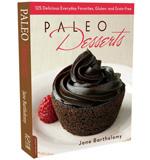By Jane Barthelemy. Is Xylitol a healthy sweetener? Touted as a safe sugar substitute for diabetics in snacks, chewing gum, and baking, Xylitol is NOT the low-calorie sweetener it’s cracked up to be. Just look at the nutrition label and you’ll see it’s loaded with calories and carbs. I don’t accept that stripping birch bark and thus killing the tree is sustainable or earth-friendly. How is Xylitol produced? How does it affect the body? You deserve to know the truth to make an informed choice. My decision is to avoid Xylitol altogether, because I don’t need the extra carbs and even worse, it upsets my intestines. But there are many other important reasons to avoid Xylitol.
Xylitol Disadvantages:
- Xylitol is high in calories and carbs. With 70% of the calories and carbs of table sugar, it is not a low-calorie sweetener. It won’t help you cut calories or lose weight. There are far better solutions – see the sweetener chart below.
- Xylitol is usually made from GMO corn. Corn stalks and husks are the cheapest source of fiber for xylitol. Most xylitol is produced in China where laws are different. We know Genetic modification is extremely damaging to the environment and to our bodies. However since GMO products aren’t labeled, how are you going to find out if your brand of xylitol is GMO-based?
- Xylitol from birch is not sustainable or environmentally friendly. Some xylitol is made from birch bark. A birch tree takes about 15 years to grow to harvest size, and stripping the bark kills the tree. Show me one sustainable birch farm and I’ll retract my accusation.
- Xylitol is deadly to dogs, causing liver failure. Never give leftovers or xylitol snacks to a dog. Never leave xylitol lying around where a dog might find it. Signs of xylitol poisoning include weakness, lethargy, depression, walking drunk, acute collapse, vomiting, seizures, high heart rate, yellow gums, black-tarry stool, diarrhea, and death. Click here for emergency procedures if your dog accidentally eats it.
- Xylitol gives you a glycemic rush, although lower than table sugar. With a glycemic index of 7 – 13 compared to table sugar’s GI of 64, xylitol is not a diabetic-friendly sweetener. You will definitely feel a slight blood sugar spike from Xylitol, and this certainly won’t help you break the sugar habit.
- Xylitol Causes Gastric Distress – Consuming more than 30 – 60 grams (2 1/2 to 5 tablespoons) can cause intestinal bloating, gas and diarrhea in humans. I can personally attest to this. I get painful gas and diarrhea on just a tiny bit. However some people are not affected.
- Xylitol causes body acidity. It raises blood sugar, which causes an acid condition in the blood, that’s an invitation to trouble. Diseases associated with hypoglycemia include Diabetes, Arthritis, Osteoporosis, Alzheimer’s, Metabolic disorder, Inflammation, Rheumatoid arthritis, and Heart disease. There are better sweeteners that don’t spike blood sugar at all.
- Xylitol has a cooling taste. This can be pleasing in Lemon Cream Pie or chewing gum. However the cooling flavor tastes strange in Chocolate Chip Cookies or Pumpkin Pie.
- Xylitol (and Erythritol) do not dissolve easily, and tend to create crystals in cold desserts. This crystallized texture is not pleasing. It disturbs my enjoyment of creamy desserts.
Compare the Calories of Xylitol with Other Sweeteners!
Xylitol Advantages:
- Improved dental health. Xylitol doesn’t cause tooth cavities, as it cannot be metabolized by plaque bacteria.
- Convenient. Xylitol can be easily measured cup for cup like table sugar.
- Lower blood sugar levels. Xylitol does not spike blood sugar as much as table sugar.
- Lower in calories. Xylitol is 30% lower in calories than table sugar.
- Tastes sweet. Yes, the flavor is delightful.
- Cooling taste is great in some refreshing dessert like Lemon Cream Pie, Key Lime Bars, or Mint Chocolate Mousse.
What is Xylitol?
Xylitol is a granulated sweetener that tastes almost exactly like sugar, made from fermented plant pulp. Originally made from birch bark, now it is usually made from GMO corn stalks, cobs, and husks. Xylitol can be extracted from raspberries, oats, mushrooms, corn, sugar cane fiber, and birch bark. Xylitol has a cooling taste, which makes it a popular sweetener for chewing gum, mints, and toothpaste.
Xylitol is a 5-carbon sugar alcohol that occurs in nature and can be fermented using single-celled yeasts of specific genus such as Candida, Pichia, Pachysolen or Debaryomycesmicrobe. Most of the world’s Xylitol is produced in China from GMO corn. Danisco, a Danish food industry owned by the DuPont chemical company, is also a producer. Xylitol has been approved in the EU as food additive #E967. Production methods and qualities vary widely. Xylitol prices vary widely too – from $5 to $13 per pound.
Neither GMO corn or Birch Bark Environmentally Sustainable
There are many myths about the superiority of birch vs. GMO corn xylitol, but there appears to be no molecular difference between these two end products. However the cost and environmental impact of the two are quite different. GMO corn xylitol is cheaper to produce, and birch is far more expensive. Chinese corn xylitol is even cheaper because of lower labor rates. These cost factors are reflected in price variations for different types of xylitol. Which type is most sustainable? Well, consuming GMO products is harmful for all living things. Can birch trees be grown sustainably? So neither GMO corn nor birch are perfect solutions. The better choice would be xylitol made from organic corn, as it is renewable, less expensive than wood, and causes less environmental damage. However I won’t eat xylitol because of the carbs and digestive issues.
How is Xylitol Made?
There are several ways to make Xylitol. Originally produced from birch bark, one common method is to extract it from corn husks, cobs, or stalks in 5 steps:
- Industrial production starts by extracting xylan, a hemicellulose (plant fiber), from corn husks, cobs, or stalks.
- It is then acid-hydrolyzed into xylose and catalytically hydrogenated at high temperatures using a catalyst called Raney nickel (nickel-aluminium alloy). The result is xylose and acetic acid.
- By heating and evaporating, the residues of acetic acid, hydrolyzing acid, and nickel-aluminum are removed.
- It is then mixed with ethanol to stabilize it into a crystalline granulated form.
- The crystals are centrifuged to separate from ethanol. The result is Xylitol.
There are many ways to produce xylitol. Another method ferments dilute xylose from plant fibers, which converts the free xylose to xylitol, and most of the free hexoses to ethanol. The fermented result is then filtered or centrifuged to remove the yeast. The ethanol is removed by evaporation or distilling. The mixture is then filtered using chromatographic separation into xylitol, which can be crystallized.
Xylitol is NOT Diabetic-Friendly or Low in Calories
Xylitol is advertised as a diabetic-friendly, low-calorie sweetener. With 66% to 70% the calories of table sugar, this is just a little bit lower than sugar, I would not consider it a “low-calorie sweetener”. Xylitol has a glycemic index of 7-13. While this is lower than sugar, xylitol will give you a slight glycemic rush, and therefore will not help you break your sugar habit completely. For this reason xylitol is NOT the best choice for diabetics. Other possible zero-calorie, zero-glycemic natural sweeteners to consider are PureLo-Lo Han Guo, Just Like Sugar-Natural Chicory root, or Swerve Sweetener-Erythritol, all of which have no carbs, no calories, and produce no glycemic or insulin response. Most so-called “healthy” sweeteners are extremely high in calories.
To compute the calories accurately, just read the nutrition labels. See calorie graph above. (BTW, I don’t sell sweeteners. I just research them, and I have a sensitive metabolism that doesn’t tolerate sugars.)
If you still love Xylitol, here’s what to do:
- Know that you might gain weight and have a glycemic response.
- Use organic Xylitol, so you know it’s not from GMO corn or pesticide treated farms.
- Keep Xylitol away from dogs.
- Enjoy it!
Sources:
Xylitol Benefits vs. Dangers for This Popular Sugar Substitute
American Veterinary Medical Association: Xylitol is harmful to dogs – https://www.avma.org/public/PetCare/Pages/foods-to-avoid.aspx
Xylitol toxicosis in dogs. http://www.ncbi.nlm.nih.gov/pubmed/22381181
Acute hepatic failure and coagulopathy associated with xylitol ingestion in eight dogs. http://www.ncbi.nlm.nih.gov/pubmed/17014359
Experimental acute toxicity of xylitol in dogs: http://www.ncbi.nlm.nih.gov/pubmed/19754913
Xylitol poisoning in Dogs: http://www.pet-health-care-gazette.com/2009/04/12/xylitol-poisoning-in-dogs/
Metabolic Engineering of Saccharomyces cerevisiae for Conversion of d-Glucose to Xylitol and Other Five-Carbon Sugars and Sugar Alcohols , by Mervi H. Toivari http://www.ncbi.nlm.nih.gov/pmc/articles/PMC2042063/
https://www.naturalnews.com/022986_xylitol_health_sugar.html
Official Xylitol site: http://xylitol.org/about-xylitol/corn-xylitol-vs-birch-xylitol
GMO-Compass.org – European-based GMO information site: http://www.gmo-compass.org/eng/database/e-numbers/293.xylitol.html
EU food industry website: http://www.food-info.net/uk/e/e967.htm
Current trends in biotechnological production of xylitol and future prospects: http://www.academia.edu/202140/Current_trends_in_biotechnological_production_of_xylitol_and_future_prospects
D-Xylitol: Fermentative Production, Application and Commercialization by Silvio Silvério da Silva, Anuj Kumar Chandel http://books.google.com/books
US Patent: Acid hydrolysis of a pentosan raw material US 4008285 A: http://www.google.com/patents/US4008285
US Patent: Methods for production of xylitol in microorganisms, using inexpensive substrates such as hemicellulose hydrolysates. Birch tree hydrolysate is obtained as a byproduct of the paper and pulping industry, using high pressure (up to 50 atm) and temperature (80-140° C.) requirements as well as the use of Raney-Nickel catalyst. US 7960152 B2: http://www.google.com/patents/US7960152
US Patent Application by Inventors: Xiyun Zhang, Ryan C. Fong. Pentose fermentation by a recombinant microorganism. This invention provides methods and compositions suitable for the conversion of xylose to xylitol and xylulose, including nucleic acid constructs, recombinant fungal host cells, and related materials. http://www.freshpatents.com/-dt20140508ptan20140127780.php
Method for the production of xylitol, by Heikkila, Heikki (Espoo, Finland) http://www.freepatentsonline.com/5081026.html
Process for Making Xylitol, by Oscar J. Melaja, Finland, http://www.scribd.com/doc/42455133/Patent-for-Xylitol-Production
Corn vs Birch: Is one better than the other? http://www.xylitolexperts.com/
Controversies around Xylitol, by Eva Söderling: http://www.ncbi.nlm.nih.gov/pmc/articles/PMC2676064/
Big Xylitol Trial Finds Scant Benefits in Adult Caries: http://www.medscape.com/viewarticle/777731
XYLITOL side effects, XYLITOL BENEFITS: http://www.zhion.com/digestion/XYLITOL.html





No Replies to "Xylitol, NOT a low calorie sweetener!"